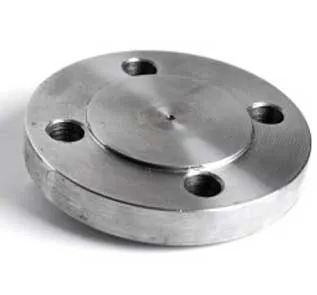-
Cangzhou Yulong Steel Co., Ltd.
-
Phone:
+86 13303177267 -
Email:
admin@ylsteelfittings.com
- English
- Arabic
- Italian
- Spanish
- Portuguese
- German
- kazakh
- Persian
- Greek
- French
- Russian
- Polish
- Thai
- Indonesian
- Vietnamese
- Zulu
- Korean
- Uzbek
- Hindi
- Serbian
- Malay
- Ukrainian
- Gujarati
- Haitian Creole
- hausa
- hawaiian
- Hebrew
- Miao
- Hungarian
- Icelandic
- igbo
- irish
- Japanese
- Javanese
- Kannada
- Khmer
- Rwandese
- Afrikaans
- Albanian
- Amharic
- Armenian
- Azerbaijani
- Basque
- Belarusian
- Bengali
- Bosnian
- Bulgarian
- Catalan
- Cebuano
- China
- China (Taiwan)
- Corsican
- Croatian
- Czech
- Danish
- Esperanto
- Estonian
- Finnish
- Frisian
- Galician
- Georgian
- Kurdish
- Kyrgyz
- Lao
- Latin
- Latvian
- Lithuanian
- Luxembourgish
- Macedonian
- Malgashi
- Malayalam
- Maltese
- Maori
- Marathi
- Mongolian
- Myanmar
- Nepali
- Norwegian
- Norwegian
- Occitan
- Pashto
- Dutch
- Punjabi
- Romanian
- Samoan
- Scottish Gaelic
- Sesotho
- Shona
- Sindhi
- Sinhala
- Slovak
- Slovenian
- Somali
- Sundanese
- Swahili
- Swedish
- Tagalog
- Tajik
- Tamil
- Tatar
- Telugu
- Turkish
- Turkmen
- Urdu
- Uighur
- Welsh
- Bantu
- Yiddish
- Yoruba

Aug . 10, 2024 21:50 Back to list
Welding Techniques and Best Practices for Joining 2 Inch Pipes Effectively and Efficiently
Welding 2-Inch Pipe Techniques, Considerations, and Best Practices
Welding 2-inch pipes is a common task in various industries, including plumbing, construction, and manufacturing. The 2-inch diameter pipes are often utilized for a range of applications, including water supply lines, gas lines, and industrial applications. Proper welding techniques are crucial to ensure strong, leak-free joints that can withstand pressure and other environmental factors. This article will explore the various techniques, considerations, and best practices for effectively welding 2-inch pipes.
Understanding the Basics of Pipe Welding
Welding involves joining two materials together by melting and fusing them, often using a filler material. In the case of pipe welding, the primary materials are typically steel, stainless steel, or sometimes plastic. The welding process requires knowledge of the base materials, the appropriate welding techniques, and safety measures.
Common Welding Techniques
1. GMAW (Gas Metal Arc Welding) Also known as MIG welding, GMAW is ideal for welding thin to medium thickness sections of metal. It provides a continuous feeder of filler material and is often used for stainless steel and mild steel pipes.
2. SMAW (Shielded Metal Arc Welding) Commonly referred to as stick welding, SMAW is versatile and can be used for a variety of pipe materials. This technique requires the welder to use a consumable electrode coated in flux, protecting the molten weld from contamination.
3. TIG Welding (Tungsten Inert Gas Welding) TIG welding offers a high level of precision and control, making it suitable for thinner materials or situations that require a clean, aesthetically pleasing weld. It uses a non-consumable tungsten electrode to produce the weld.
4. Flux-Cored Arc Welding (FCAW) Similar to GMAW, FCAW uses a tube filled with flux. It's especially useful for outdoor applications and can be performed with or without shielding gas, making it quite versatile.
Key Considerations in Welding 2-Inch Pipes
welding 2 inch pipe

1. Material Types The type of pipe material will dictate the welding technique. Mild steel pipes may be easier to weld, while stainless steel may require more sophisticated techniques like TIG welding to avoid contamination.
2. Joint Design The type of joint used will significantly affect the strength of the weld. Common joint designs for pipe welding include butt joints, socket joints, and fillet joints. Proper joint preparation can help increase the quality of the weld.
3. Fit-Up Ensuring that the pipes fit properly before welding is critical. Misalignment can lead to weak spots or incomplete welds. Proper alignment tools and techniques, such as tack welding, can help maintain alignment during the welding process.
4. Heat Control Managing heat input is crucial, especially with smaller diameter pipes like 2 inches. Overheating can lead to warping or distortion, and inadequate heat can result in a weak bond. Techniques such as weaving patterns or adjusting travel speed can help control heat input.
Best Practices for Successful Pipe Welding
1. Safety First Always prioritize safety by using appropriate personal protective equipment (PPE), including gloves, helmets, and protective clothing. Ensure the workspace is well-ventilated to avoid inhaling harmful fumes.
2. Pre-Weld Preparation Clean the pipe surfaces to remove rust, oil, and other contaminants. Proper cleaning can significantly enhance weld quality.
3. Post-Weld Inspection After welding, inspect the joints for defects, including cracks, porosity, and incomplete fusion. Non-destructive testing methods such as ultrasonic or radiographic testing can help identify internal flaws.
4. Continuous Learning Keep up with new welding techniques and technologies through training and workshops, as advancements in the field can improve efficiency and effectiveness.
In conclusion, welding 2-inch pipes requires a combination of technical skill, proper equipment, and adherence to safety standards. By understanding different welding techniques, considering material properties, and following best practices, welders can produce high-quality, durable joints suitable for various applications. With the right approach, the task of welding these pipes can be both efficient and rewarding, contributing positively to the overall project’s success.
Latest news
-
ANSI 150P SS304 SO FLANGE
NewsFeb.14,2025
-
ASTM A333GR6 STEEL PIPE
NewsJan.20,2025
-
ANSI B16.5 WELDING NECK FLANGE
NewsJan.15,2026
-
ANSI B16.5 SLIP-ON FLANGE
NewsApr.19,2024
-
SABS 1123 FLANGE
NewsJan.15,2025
-
DIN86044 PLATE FLANGE
NewsApr.19,2024
-
DIN2527 BLIND FLANGE
NewsApr.12,2024
-
JIS B2311 Butt-Welding Fittings LR/SR 45°/90° /180°Seamless/Weld
NewsApr.23,2024











